The Vatican holds one of the world’s greatest art collections. Some of the most famous art works on the planet are there. If you’re an art or history lover, the Vatican is a must see site in Rome.
But the Vatican is a vast and intimidating place.
You could easily stare in awe at the Raphael Rooms or the Map Rooms and forget that they are actual paintings on display in the Vatican Museums. Beautiful paintings, by the greatest masters of Italian art.
If you want to be dazzled by the likes of Leonardo da Vinci and company, plan to spend a good few hours in the Vatican museums.
If you want to see everything else in Vatican City, you should commit most of the day. To inspect every last thing, well, that would require days.
It’s important to know what to see at the Vatican in advance because there are 26 museums inside the Vatican and a wall space of 5 miles.
In this Vatican Museums guide, I identify 20 must see masterpieces in the Vatican Museums and give you must know tips for visiting.
Overview of the Vatican Museums
There’s over 70,000 densely packed works of art (not all on display). That’s a lot of ground to cover. You need to know in advance what you absolutely shouldn’t miss at the Vatican.
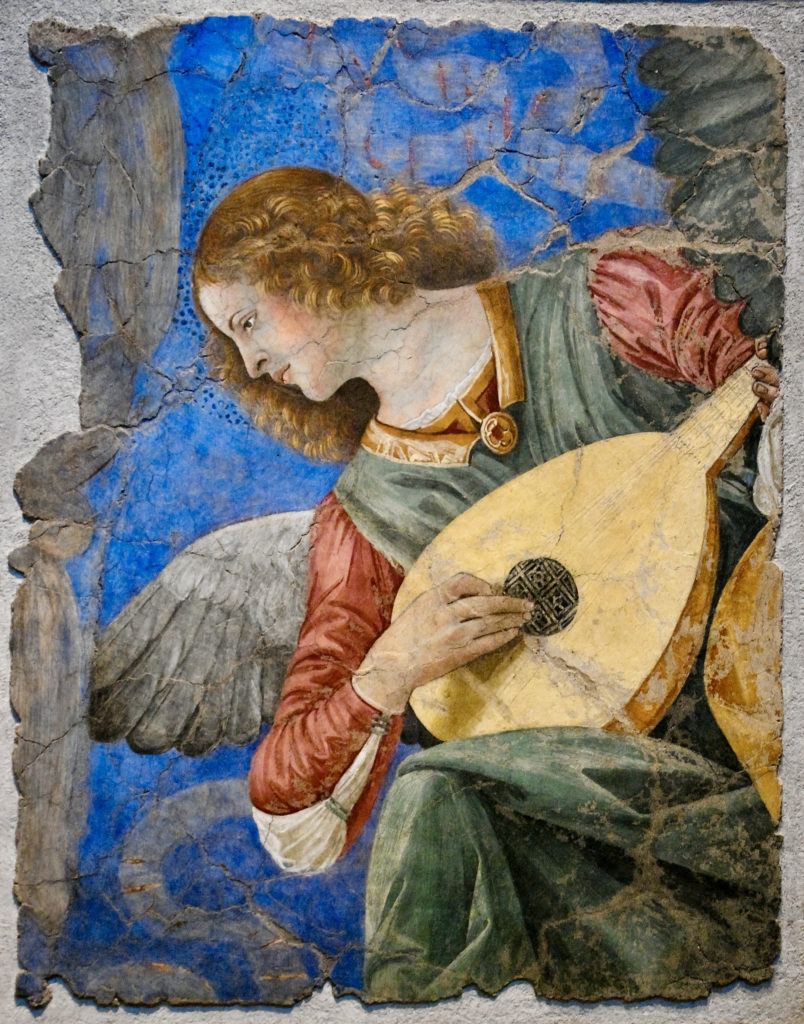
The last time I was in Rome, I went to the Vatican Museums twice, the first time on a skip-the-line small group tour and the second on a DYI mission to see everything the tour left out (quite a lot as it turned out).
There’s a museum path that takes you through the long corridors and wings of the Vatican Museums. On the first floor, you’ll find the Vatican Pinacoteca, the Pio-Clementine Museum, the Chiaramonte Museum, the Gregorian Egyptian Museum, and the Gregorian Etruscan Museum.
The latter three are very specialized museums that you can add to your Vatican itinerary if you’re interested and have the time.
The Vatican Pinacoteca is essentially a small painting gallery within the Vatican museums. It opened in 1930 and contains the papal easel collection.
The gallery gives you a historic and chronological overview of the development of Western painting. 18 rooms hold the Vatican’s most precious paintings.
The Pinacoteca is often overlooked. It’s in a newer section of the Vatican and rarely covered on standard Vatican tours.
It’s not in the direction of the signs pointing to the Sistine Chapel either. But it’s an absolutely essential detour for art lovers. There’s an entire room full of Rapahels!
Opened in 1932, the Pio-Clementine Museum is the oldest art collection in the Vatican Museums. It houses ancient Greek and Roman sculptures.
It’s named after the two popes who oversaw its foundation, Clement XIV and Pius VI. You’ll stroll through parts of the museum on a standard tour. In the center of the museum is the 18th century Octagonal Courtyard, with fountains, trees, and benches.
It’s named after the two popes who oversaw its foundation, Clement XIV and Pius VI. You’ll stroll through parts of the museum on a standard tour. In the center of the museum is the 18th century Octagonal Courtyard, with fountains, trees, and benches.
On the second floor, you’ll find the Tapestries Hall, the Gallery of Maps, and the Raphael Rooms. The Raphael Rooms are four rooms, which were the public rooms of the pope’s personal apartments in the time of Julius II.
They were painted by the famous Raphael. The most famous fresco is The School of Athens.
Your last stop will be the stunning Sistine Chapel, with the world famous Michelangelo frescos. Unless you’re on you own, you’ll probably won’t see the Raphael Rooms or the Borgia Apartments. They’re not on the “short cut” route to the Sistine Chapel, which most tour guides use.
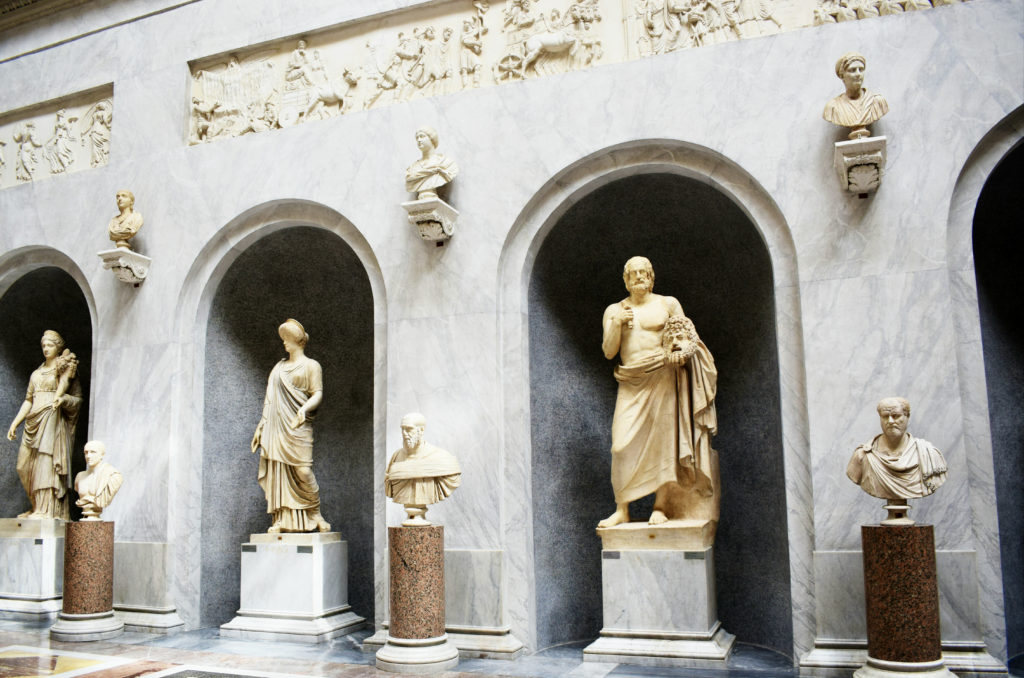
Should You Take A Vatican Tour?
I’m going to spend some time on this issue because it’s very important. You don’t want to be there, at the Vatican, and not see something that’s important to you.
If you can, I think you should take a guided tour and then do a DIY tour. I’ve done the Vatican many time both ways. If you’re a first timer, you’ll likely want a tour.
If you don’t book a guided tour, you absolutely must pre-book a skip the line tickets. Or else you’ll be stuck in line for hours unless it’s the dead of winter.
Most guided tours don’t cover everything in the Vatican. For example, you will likely miss the Raphael Rooms and the specialty museums.
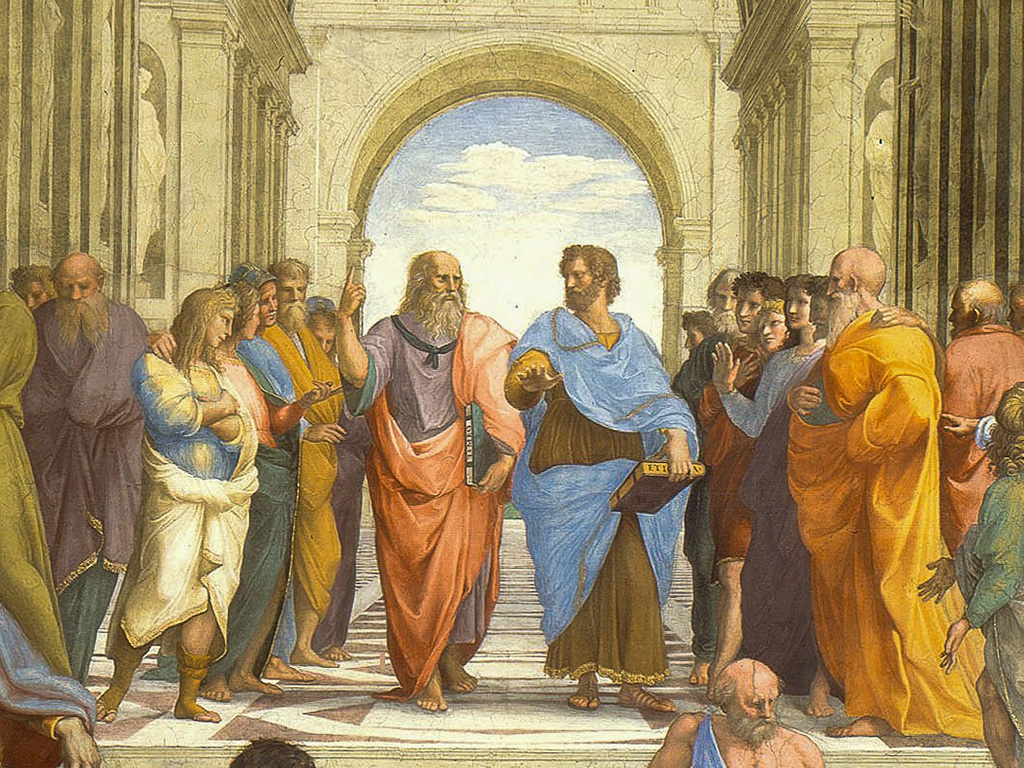
Here are your Vatican tour options. You can pick a tour tailored to your own interests and museum going tastes.
- a 2.5 hour overview on a skip the line small group guided tour
- a 3 hour no wait tour that also includes the Raphael Rooms
- a 3.5 hour tour Vatican visit with a guided tour of St. Peter’s Basilica
- a 3 hour Friday night tour of the Vatican
- a Vatican tour that includes a climb of the dome of St. Peter’s Basilica
- a small group Sistine Chapel first entry experience with Vatican Museums (good for early birds)
- a 2-3 hour private tour of the Vatican
If you’re taking a guided tour, you’ll access St. Peter’s Basilica from the back left corner of the Sistine Chapel. Once inside the basilica, you cannot re-enter the Vatican Museums.
So make sure you’ve seen everything you want to see at the Vatican before venturing into the basilica.
If you want to see all the top attractions in Vatican City besides the museums, here’s my one day in Vatican City itinerary.
Guide To The Vatican Museums: 20 ArtWorks
Ah, now down to what to see at the Vatican. There are millions of artworks and paintings to see. There are endless rooms and crowded display cases.
We’re speaking of beautiful, groundbreaking works of art. The art history major in me can’t help rhapsodizing.
1. Raphael, Transfiguration, 1520, Pinacoteca Room 8
The beautiful Transfiguration is in Room 8 of the Pinacoteca. It was painted by Raphael, one of the greatest painters of the Renaissance period.
The Transfiguration was commissioned by Cardinal Guilio de Medici, who later became Pope Clement VII. The dramatically lit painting was critically acclaimed, and carried at the head of Raphael’s funeral procession to the Pantheon.
The painting combined two biblical narratives. It tells the story of Christ leading his disciples up a mountain to show them his true form, a being of pure light. It also depicts a miracle — when Christ exorcized the demons of a young boy suffering from lunacy.
Why is the Transfiguration important? It bridges the period between the high Renaissance and the Baroque. It’s notable for its use of chiaroscuro (the effect of contrasted light and shadow), skill in composition, and expressiveness.
2. Laocoön and His Sons, the Octagonal Court of the Pio-Clementine Museum
Laocoön is one of the world’s most ancient and valuable sculptures. The sculpture was famously unearthed near Santa Maria Maggiore in 1506.
The statue was believed to have once decorated the palace of Emperor Titus. After the fall of the Roman Empire, Laocoön was lost for a millennium.
Upon its discovery, Michelangelo pressed for its restoration and urged Julius II to purchase it. It became the first work of art displayed at the Vatican.
Laocoön was initially lauded as the 2nd century B.C. Greek sculpture described by the classical author Pliny the Elder. But Laocoön is most likely a 1st century Roman marble statue copied from the bronze Greek original.
Laocoön is revered for its technical mastery and emotionally evocative rendering. Laocoön is based on an ancient Greek myth. In it, the priest Laocoön and his sons are attacked by a serpent sent by either Poseidon or Athena.
3. Raphael, School of Athens, 1509-11, Room 1 of the Raphael Rooms
The Raphael Rooms are a world famous assemblage of Renaissance art. A precocious young Raphael and his assistants (particularly Giulio Romano) painted the frescos in the four rooms between 1508-24. The Raphael Rooms served as the private chambers of Julius II and subsequent popes.
The School of Athens is the undisputed star of the Raphael Rooms. In it, an idealized throng of the great philosophers of the classical world are gathered together, despite living at different times. The viewer is fully engulfed in the painting, in theatrical style.
The two figures in the center are Plato (on the left) and Aristotle (on the right). Plato is given the face of Leonardo da Vinci, the famed Renaissance master, in tribute.
Plato points up because he believed in a true and eternal reality. Aristotle points down because he believed the only reality was the here and now. Each carry their most well known philosophical treatise.
Raphael and Michelangelo were arch rivals during the Renaissance. They worked simultaneously at the Vatican.
Legend holds that, as a dig, Raphael painted Michelangelo’s face on the sad and wailing philosopher Heraclitus, seated in the foreground. Raphael painted his own self portrait in a black beret at the far bottom right of the painting.
School of Athens is important because it’s a symbol of the Renaissance. It depicts the marriage of art, philosophy, and science — a hallmark of the Italian Renaissance. And it shows Raphael’s mastery of techniques like foreshortening and perspective.
READ: Guide To The Paintings of Raphael
4. Apollo Belvedere, the Octagonal Court of the Pio-Clementine Museum
Apollo Belvedere is a famous sculpture from antiquity, certainly the most famous sculpture in the Vatican. It’s a Roman copy of Leochares’ bronze original from the 2nd century. Critics recognized it as Roman because Apollo is wearing distinctively Roman sandals. The identity of the sculptor is unknown.
The larger than life marble sculpture shows the god Apollo in a martial pose, having just shot an arrow. He may originally have been carrying one. The work is anatomically realistic and brilliantly executed. Apollo Belvedere is considered the epitome of masculine beauty and athleticism.
Apollo Belvedere was discovered around 1485. It was later acquired by Giuliano della Rovere, a great art collector, who became — you guessed it — Julius II. Apollo Belvedere is praised as the “highest artistic ideal of all the works of antiquity.”
5. Belvedere Torso, Pio-Clementine Museum
This celebrated fragment of a damaged male nude statue was hugely influential to Renaissance artists such as Michelangelo and Raphael.
It’s said to have inspired Michelangelo’s Creation of Adam in the Sistine Chapel. What inspired these 16th and 17th century artists most was the twisted, convoluted quality of the statue.
Discovered in the 15th century, the marble sculpture itself dates back to the 1st century BC. It’s thought to be a Greek copy of an older bronze Roman original. The statue is signed on the base by “Apollonius, son of Nestor, Athenian.”
The man depicted? The most favored hypothesis is that it’s the Greek hero and demigod Hercules. But other theories say the sculpture is Ajax, possibly contemplating suicide.
6. Augustus of Prima Porta, Braccio Nuovo
Augustus of Prima Porta is a 2 meter high marble statue of Emperor Augustus. It was discovered on April 20, 1863 during excavation of the ruins of the Villa of Livia (Augustus’ wife) near Rome. She retired there after his death.
The statue has been dated to the 1st century. It’s likely a copy of an earlier sculpture from 20 B.C., which celebrated Augustus’ victory over the Parthians.
Arguably one of the most important statues of Emperor Augustus, the Augustus of Prima Porta is certainly one of the best preserved extant portraits of him. This sculpture is beautifully decorated and expertly carved in marble from the Greek island of Paros.
Likely a propaganda piece, the statue exudes power. A young Augustus is in full military dress, with a highly decorated breastplate and contrapposto pose.
Despite a few breaks the statue is virtually fully intact. It’s now one of the most iconic images of the Roman Empire’s first emperor.
7. Caravaggio, The Entombment of Christ, 1603, Pinacoteca, Room 12
Hidden away in a quiet corner of the Vatican, where almost no one ventures, is a Caravaggio masterpiece — The Entombment of Christ. It’s one of the most famous pieces in the Pinacoteca.
Carravagio is famed for his naturalistic approach to Baroque art and daring composition. His work marked a seismic shift away from the Renaissance’s idealism that Raphael personified.
In this painting, Caravaggio rejected the prevailing tendency to portray Christ as a hero. Instead, the viewer is confronted with a heavy corpse in a black tomb. As such, the painting sparked controversy.
Behind Christ, three women mourn and Mary stares at her son’s lifeless body. The painting sparked a trend, which became wildly popular, to make celestial subjects more plebeian and accessible.
The spot-lit figures are set against a dark space. This contrast was an example of the extreme “chiaroscuro” that made Caravaggio’s work so prized. It would go on to define the Baroque period.
READ: Caravaggio Trail in Rome
8. Leonard da Vinci, St. Jerome in the Wilderness, 1482, Pinacoteca Room 9
Only 15 paintings by Leonardo da Vinci exist today, 16 if you count the hotly disputed Salvator Mundi painting. One of them is at the Vatican, St. Jerome in the Wilderness. It’s an unfinished and intimate masterpiece, typically Leonardo-esque, with masterful attention to human anatomy.
And it’s very enigmatic. We don’t know who commissioned it or why it was created. We don’t know why Leonardo didn’t finish it. Possibly, St. Jerome didn’t meet with his patron’s approval or Leonardo abandoned it due to his well known perfectionism.
In the painting, Leonardo depicts St. Jerome in prayer. Then a hermit in the desert, he looks emaciated, self-immolating, and contemplative. A profound sorrow emanates from the painting. It’s an emotional and devotional piece.
Why is St. Jerome important? Aside from being a rare Leonardo, it shows his classic style and innovation. Leonardo used his fingers to create a soft-focus landscape called sfumato. As you can see, it’s also a painting of intense psychological power.
READ: Guide To All of Leonardo da Vinci’s Paintings
9. Raphael, The Annunciation, 1502-03, Pinacoteca, Room 8
The Annunciation is one of Raphael’s earlier works. It’s on display in room 8 of the Pinacoteca. Originally, the Oddi family commissioned the painting for the family chapel in Perugia.
The paining depicts the classic annunciation scene, where the angel Gabriel tells Mary of the coming of Christ. But, in the background, two open arches look out onto a landscape.
This gives the painting a three dimensional perspective — highly unique for that day. In the upper left corner, God looks down, stealing the focus from Mary.
Always with an eye for great art and itchy fingers, Napoleon seized The Annunciation and displayed it in the Musee Napoleon, a one time name for the Louvre. The painting was returned to Italy in 1815 and placed in the Vatican.
10. Borgia Apartments
The Borgia Apartments are a lavishly decorated suite of six rooms.They’re one floor down from the Raphael Rooms. You’ve got to take the stairs. But it’s worth it.
The Borgia Apartments are ancient, without the benefit of the facelift given to the Raphael Rooms. There are divine gilded ceilings and tile weathered floors.
In the late 15th century, Pope Alexander VI commissioned the Italian painter Bernardino Pinturicchio to decorate his private rooms. Pinturrichio was known for his delicate and refined frescos.
The first room of the Borgia Apartments is the Room of the Mysteries of Faith. It’s decorated with scenes from the life of the Virgin Mary. The Annunciation of the Birth of Christ is the first in the sequence and the prettiest of the paintings in the Borgia Apartments.
When the Pinturicchio frescos were cleaned, restorers discovered a scene in Resurrection the included Native Americans. It was completed 2 years after Christopher Columbus’ voyages in the New World. It’s believed to be the earliest known European painting of Native Americans.
11. Room of the Sybils, 1494, Borgia Apartments
The last room in the Borgia Apartments is the beautiful Room of the Sibyls. The ceiling is a golden stucco with heraldic emblems. The sibyls are found inside the 12 lunettes, or arched apertures.
The sybils are silhouetted against a blue background, alternated with the prophets. They hold fluttering scrolls, announcing the coming of Christ. Typically, sybils are portrayed as wise older women. But, here, they’re beautiful young women.
In contrast, the ceilings are grim, depicting scenes of ancient sacrifice. It’s unclear what the connection is between the ceiling and the lunettes.
The Room of the Sybils has several different motifs. There are mythological creatures, elaborate flora and fauna, crowns, and astrological symbols. The Borgia family crest was a bull and Pinturicchio made sure the Taurus symbol was on the wall.
12. Giotto, Stefaneschi Polyptych, 1320, Pinacoteca, Room 11
The Stefaneschi Polyptych is one of the Vatican’s most ancient works. It’s a richly gilded double-sided work created by by Florentine painter Giotto di Bondone, around 1320. It’s a rare Gothic medieval piece in the Vatican an one of the first things you’ll see when you walk into the Pinacoteca.
Giotto was the greatest painter of the 14th century. He’s said to have “baptized the Renaissance.”
His paintings reveal acute observations of human behavior and emotions, unusual for the time. Most of Giotto’s life work consists of in situ frescos. The most famous are ones adorning the Scrovegni Chapel in Padua. So the polyptych altarpiece is a rare chance to see Giotto’s work in a museum.
Intended for a high altar in St. Peter’s Basilica, the polyptych was commissioned by Cardinal Stefaneschi. It depicts St. Peter on a throne with an array of saints and Cardinal Stefaneschi at his feet. The likeness is considered among the first realistic portraits ever made.
On the reverse side, in contrast to these stately images, there’s violence. Giotto depicts the crucifixion of St. Peter and the beheading of St. Paul.
13. The Last Supper Tapestry, Pinacoteca, Room 8
This precious Vatican tapestry is known as Last Supper in Amboise in the Castle of Clos Lucé. It was inspired by and faithfully reproduced Leonardo da Vinci’s famous fresco, The Last Supper (which is Milan). It’s a popular scene of Chrisitan iconography — where Christ predicts his own betrayal.
READ: Leonardo’s The Last Supper and How To Visit It in Milan
The tapestry has the same Leonardo-esque assembly of apostles at the table. It reproduces the fresco in full scale, capturing Leonardo’s nuances and sfumato technique. The only difference is that the scene is framed with architectural accents. The tapestry is made of silk with gold and silver threads and a crimson velvet border.
The tapestry, which is protected by glass, was created in a Flemish workshop. Despite some hypotheses, it’s still not known exactly which artist created the work or even which factory it was woven in.
READ: Guide To all the Last Supper Paintings of Renaissance Italy
14. Aldobrandini Wedding Fresco, Room of the Aldobrandini Wedding, side room off the main museum path
The Aldobrandini Wedding Fresco is a beautiful and enigmatic ancient Roman fresco. It’s one of the most important paintings from the early Roman Empire.
The wedding fresco dates to the age of Augustus, Rome’s first emperor. It was found in 1610 in the ruins of a Roman home on the Esquiline Hill and detached.
The fresco is generally thought to portray a wedding scene. Aphrodite is in the center, attempting to calm a distraught bride who fears her wedding night. A god, or perhaps the groom, is on the threshold.
Be sure to look down in the Aldobrandini Wedding Room. The floor is inlaid with ancient Roman mosaics. It depicts Achilles in his chariot dragging the corpse of the Trojan prince Hector, a notable event during the Trojan War.
15. Fra Angelico, The Virgin and the Child Enthroned, 1435, Pinacoteca, Room 3
This ancient and delicate painting is by Fra Angelico, a Dominican monk with a gift for painting. It glitters like an exquisite jewel.
The painting shows Mary playing with her child, a popular religious motif at the time. Fra Angelico was known posthumously as the “Angelic Painter.”
In the painting, there are three dominant colors — red, blue, and gold — all appearing on the Virgin Mary. The angels form a sort of tapestry around Mary, though in more muted colors. The background is studded with flowers.
A notable feature of the painting is Mary’s transparent veil, an artistic feat of the time. So too was the tender glance between Mary and son.
READ: Guide To Fra Angelico Frescos in Florence’s San Marco Monastery
16. The Sistine Chapel Ceiling Frescos, 1508-12
Finally, we’re here! Michelangelo’s Sistine Chapel frescos are the undisputed highlight of a visit to the Vatican. They’re among the most famous paintings in the history of art. 20,000 people visit daily to cast their eyes upward to the glorious ceiling.
Originally, the ceiling of the Sistine Chapel was azure blue with stars. But, in 1508, Pope Julius II summoned Michelangelo from Florence to paint the ceiling of his private chapel.
Michelangelo wasn’t entirely enthusiastic. He was first and foremost a sculptor. But he had no choice in the matter.
According to Julius II, it was “paint or hang.” In any event, Michelangelo was insanely talented and up to the task at hand — which the canny pope no doubt discerned.
Michelangelo spent 4 years toiling away on the 9 ceiling panels, which depict scenes from Genesis and seem to open up the chapel to heaven. And he did it standing up, not laying down as legend holds.
When the Sistine Chapel ceiling was unveiled in 1512, it was somewhat shocking. The frescos were revolutionary in their execution. Instead of staid figures, Michelangelo painted figures that looked like sculptures in almost acrobatic poses. They wear flowing brightly colored garments.
In the middle is Adam, the progenitor of the human race. The Creation of Adam is the most famous Sistine Chapel ceiling scene. God is depicted as a flying figure acccompanied by a host of angels.
Adam lies in the center of earth. He looks adoringly at God, waiting for the magic touch. Interpreted as the transmission of life, this touch is the most famous “hand of god” depiction in the world, appearing on coffee cups and fridge magnets.
17. Michelangelo, The Last Judgment, Altar Wall of the Sistine Chapel, 1533-38
In 1533, Michelangelo made a return visit to the Sistine Chapel. Pope Julius II summoned him to paint The Last Judgment on the altar wall. This time, Michelangelo worked entirely alone, taking 5 years to complete the project.
This fresco is rendered in a different style than Michelangelo’s prior ceiling frescos. The figures are more monumental and the colors are largely monochromatic — essentially sky and flesh tones.
In the middle, Christ is excessively youthful and floats on clouds. He’s depicted more like Apollo than the suffering bearded savior one expects.
But The Last Judgment was a difficult task. Michelangelo was already 62 when he began work. Perhaps to depict his unhappiness at the enforced servitude, Michelangelo hid two dour self portraits in The Last Judgment. He painted his face on Holofernes’ severed head. And his face is on the shedded serpent skin held by Saint Bartholomew.
In 1980, a serious renovation of the Sistine Chapel began. It took 14 years to clean away the detritus of centuries. The result was a glowing and richly hued Sistine Chapel seen in natural (no longer artificial) light.
The vibrant restoration stunned most viewers. I know it did me. I could hardly believe the difference in the chapel between my youthful and subsequent visits.
If you want to know why “underpants” or draperies were later painted on The Last Judgment after Michelangelo’s death, read my article.
18. Pietro Perugino, Christ Giving the Keys to St. Peter, on the north wall of the Sistine Chapel
News Flash! There are paintings in the Sistine Chapel that aren’t by Michelangelo. There are beautiful frescos by Botticelli, Perugino, Ghirlandaio, and Pinturicchio on the chapel walls.
Perugino’s Christ Giving the Keys to St. Peter is widely regarded as one of the most beautiful frescos in the Sistine Chapel. It’s part of the New Testament narrative cycle. Extremely large in scale, the painting is considered the perfect exemplar of Renaissance painting.
The painting shows the moment when Christ, standing in the center dressed in purple and blue, hands the keys of heaven to a kneeling St. Peter. This act symbolizes the direct link between Christ and all subsequent popes, lest you forget.
The painting is divided into a foreground, middle ground, and background — lending it that prized Renaissance three dimensional perspective. Each figure is carefully drawn in repeating postures and colors. The figures are idealized. Some of their postures are based on statues from classical antiquity.
19. Francis Bacon, Study for Velazquez Pope, 1961
If you proceed past the Borgia Apartments, shortly thereafter you’ll encounter this amazing Francis Bacon work in the Vatican’s contemporary art section.
It’s part of a series aimed at recreating Velazquez’ famous painting of Pope Innocent X, which Velazquez considered thought was one of the “world’s greatest paintings.”
If you want to see the Velazquez work itself, head to the Doria Pamphlij Museum. It’s a hidden gem in Rome — a gorgeous palace stuffed with fantastic art.
20. Recently Discovered Raphaels
In 2017, the Vatican discovered two paintings by Raphael when a room was cleaned and restored. A significant find. They were hidden right under the Vatican’s nose!
The paintings adorned the fourth of the Raphael Rooms, the banquet hall called the Hall of Constantine. But the paintings were completely obscured by the passage of time. The paintings depict two female figures, one Justice and one Friendship.
They were painted at the end of Raphael’s life. Departing from tradition, Raphael used oil paint, not traditional fresco materials. He also used some unusual colors.
The Hall of Constantine is now on display to the public. The Vatican describes the restoration of the recently found paintings as its “most important project in decades.”
Practical Guide & Tips Visiting the Vatican Museums
Address: Viale Vaticano, 00165 Rome
Hours: Monday to Saturday, 9:00 am to 6:00 pm
Entry fee:
€ 17. € 21 if purchased online, which is recommended. On the last Sunday of each month, the Museums can be visited free of admission charge from 9:00 am to 2:00 pm. But it will likely be packed.
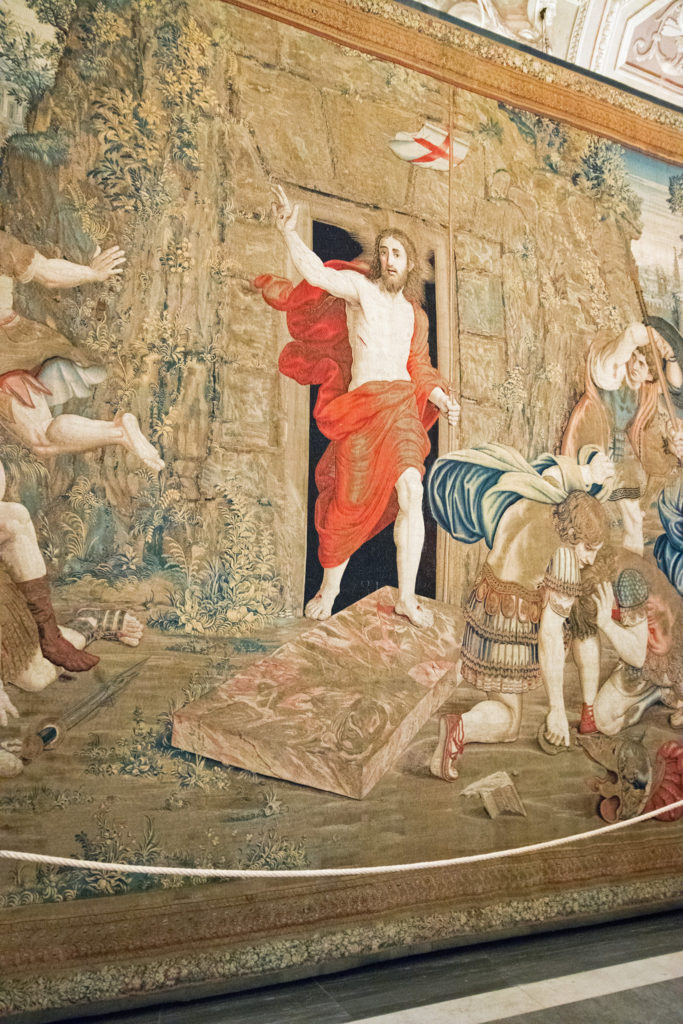
1. How To Get To The Vatican
The Vatican Museums can be accessed by foot, metro, or bus. You can literally just walk right in.
The metro stops are Ottaviano and Cipro. Or take bus #40 or 64.
If you arrive at St. Peter’s Basilica first, it’s a 15 minute walk to get the Vatican entrance.
2. Tickets
You should definitely buy your Vatican ticket online. You can also book your ticket through the Vatican website in advance of your arrival, for an extra 4 euro charge.
If you don’t splurge for skip the line access, you could wait hours in line to get inside. There are even waits in low season.
Know in advance that there will be plenty of companies over-charging for tours, loitering just outside of the Vatican walls.
3. Photography
You can take photos (no flash) everywhere except the Sistine Chapel. Silence must be maintained in the Sistine Chapel.
You may want to read up on the paintings in advance. You guide won’t be able to tell you about them inside.
4. Dress Code
There’s also a strict dress code at the Vatican — no shorts, no hats, no cleavage, no bare shoulders. Be forewarned, if you’re there in the summer, there’s no air conditioning and it can feel suffocating.
Be sure to wear comfortable shoes. You could be there for hours.
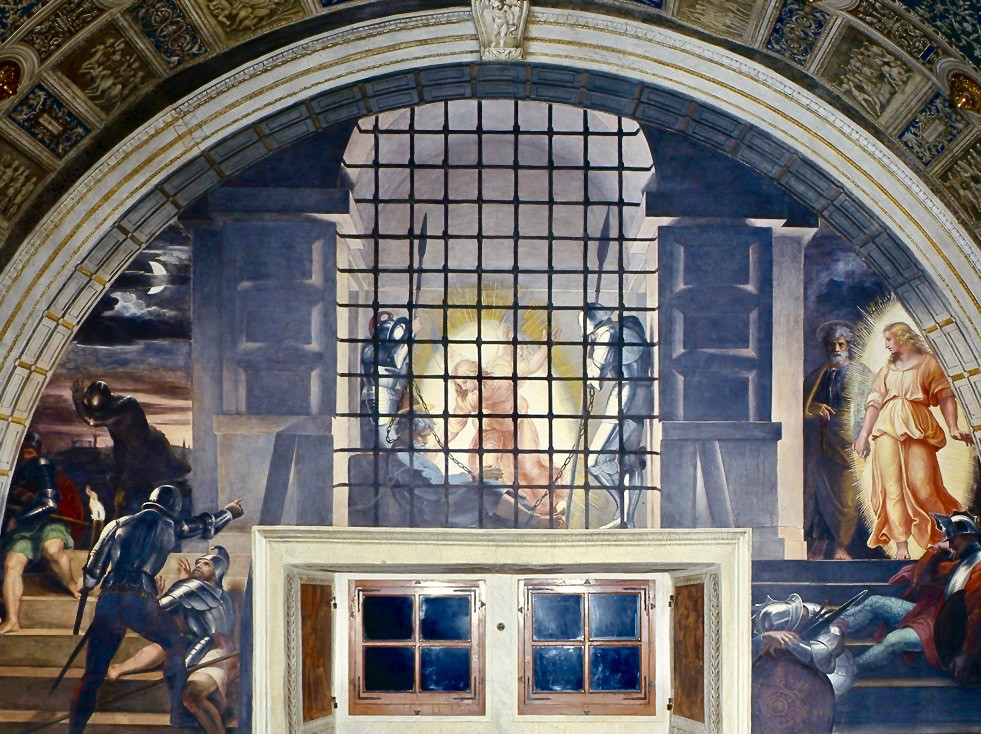
5. Other Tips
You can’t touch anything in the Vatican Museums. These are priceless relics and artworks. So resist the urge! If you don’t resist, you may be escorted out.
There aren’t many places to stop to rest in the Vatican Museums. In most galleries, seats are in short supply. If you need a break, head to the Pine Cone courtyard. There are also some benches in the Gallery of Maps and the Sistine Chapel.
I hope you’ve enjoyed my guide to the Vatican Museums. You may enjoy these other Rome travel guides and resources:
- 8 ways to spend 1 day in Rome
- 3 day itinerary for Rome
- 5 day itinerary for Rome
- Hidden gems in Rome
- Best museums in Rome
- Archaeological sites in Rome
- Guide to the Borghese Gallery
- Guide to Palatine Hill
- Guide to the Roman Forum
- Guide to the Colosseum
If you’d to see the must see masterpieces at the Vatican, pin it for later.

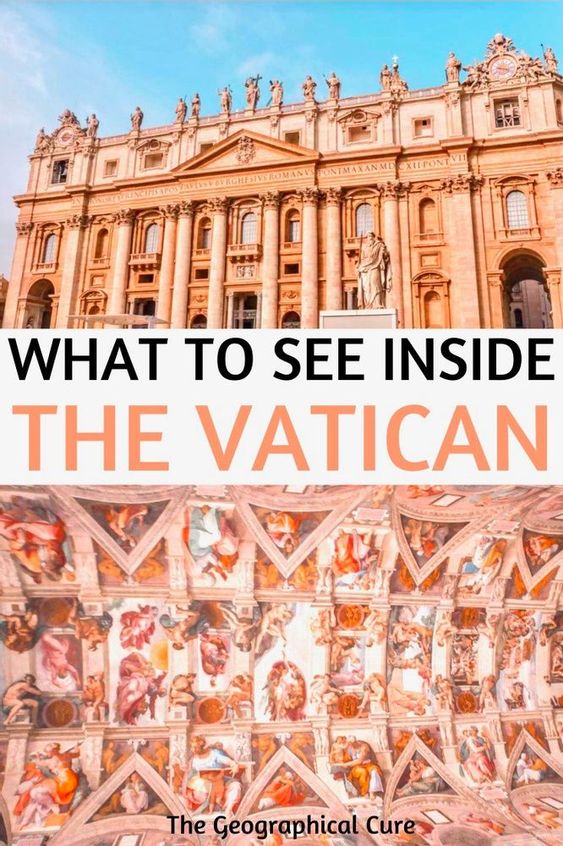
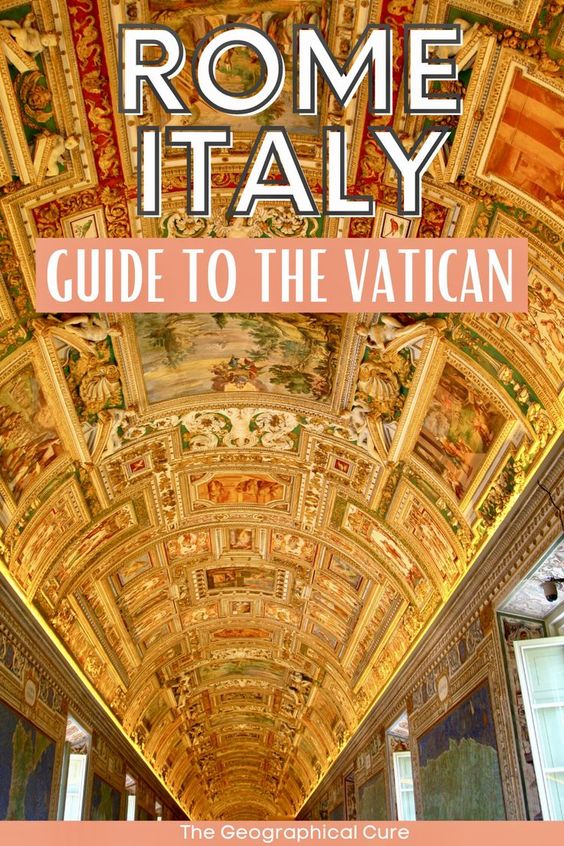
If we do a tour (we signed up for an early morning tour with breakfast) are we able to stay and look at any of the museums on our own or do most tours have you exit? Thanks for such helpful information.
Tours will take you into the Sistine Chapel and you cannot exit from there. You have to see the other museums before heading into the chapel. Your guides can’t offer you much by way of guidance in the chapel anyone because silence is the rule. So you could easily double back and see the other museums and do the chapel by yourself.
The only other caveat is that the guides usually take your from the chapel to St. Peter’s Basilica. So if you break off before the chapel, you won’t here what they have to say about the basilica.